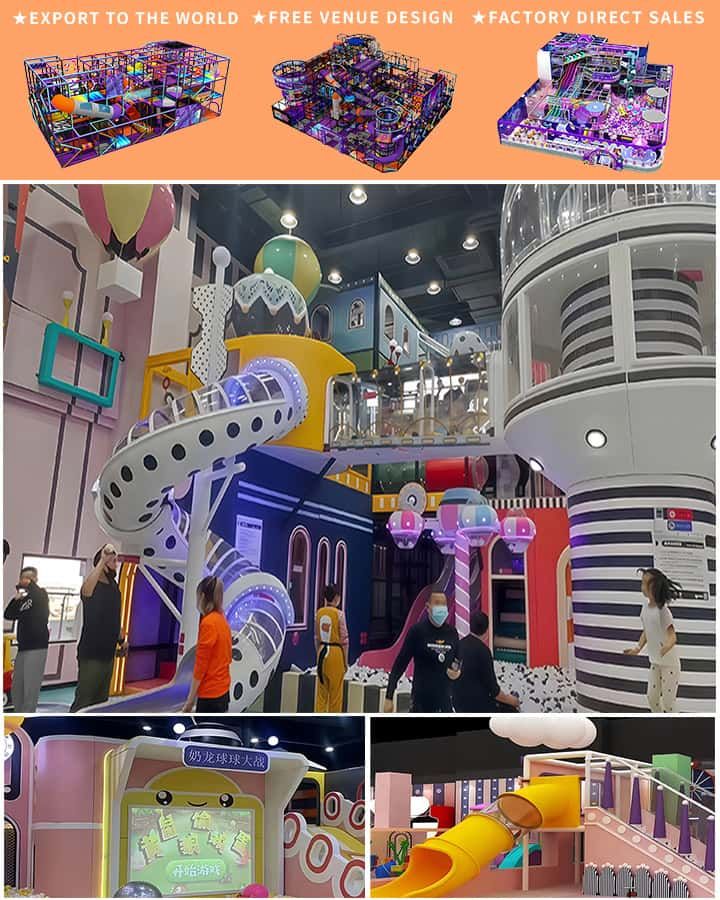In recent years, indoor playground equipment has become an integral part of entertainment and recreation facilities across the United States. With the changing dynamics of urban living, parents are increasingly seeking safe and engaging environments for their children to play, learn, and develop. This surge in demand has led to a significant growth in the market for indoor playground equipment, transforming the way families spend quality time together.
The Evolution of Indoor Playgrounds
The concept of indoor playgrounds is not entirely new, but it has evolved considerably over the past few decades. Initially, these spaces were often limited to basic structures like inflatable bounce houses or small climbing frames. However, advancements in technology, design, and materials have revolutionized the industry. Modern indoor playgrounds now feature elaborate setups that include multi-level play structures, interactive games, trampolines, ball pits, and even themed areas inspired by popular cartoons and movies.
Safety and Quality Standards
 One of the primary reasons for the popularity of indoor playground equipment is the emphasis on safety and quality. Manufacturers in the United States adhere to stringent standards set by organizations such as the American Society for Testing and Materials (ASTM) and the Consumer Product Safety Commission (CPSC). These standards ensure that the equipment is durable, non-toxic, and free from hazardous components. Regular inspections and maintenance are also conducted to guarantee ongoing safety for young users.
One of the primary reasons for the popularity of indoor playground equipment is the emphasis on safety and quality. Manufacturers in the United States adhere to stringent standards set by organizations such as the American Society for Testing and Materials (ASTM) and the Consumer Product Safety Commission (CPSC). These standards ensure that the equipment is durable, non-toxic, and free from hazardous components. Regular inspections and maintenance are also conducted to guarantee ongoing safety for young users.
Benefits of Indoor Playgrounds
Indoor playgrounds offer numerous benefits that extend beyond mere entertainment. They provide a controlled environment where children can engage in physical activities, which is crucial for their overall development. Climbing walls, slides, and obstacle courses help improve motor skills, coordination, and balance. Additionally, these spaces often feature educational elements such as puzzles and interactive exhibits, promoting cognitive development and learning through play.
For parents, indoor playgrounds offer a convenient and reliable option for childcare and socialization. Unlike outdoor playgrounds, indoor facilities are not subject to weather conditions, ensuring that children always have a safe place to play. Moreover, many indoor playgrounds offer programs and events that encourage social interaction, helping children build friendships and develop social skills.
Economic Impact
The rise of indoor playground equipment has also had a notable economic impact. The industry has created jobs in manufacturing, installation, maintenance, and operation. Furthermore, indoor playgrounds attract foot traffic to shopping centers, malls, and other commercial venues, benefiting retailers and local businesses. The presence of a well-designed indoor playground can significantly enhance the appeal of a retail location, making it a family-friendly destination.
Future Trends
Looking ahead, the indoor playground equipment market is poised for continued growth and innovation. Technological advancements such as augmented reality (AR) and virtual reality (VR) are expected to integrate with traditional play structures, offering immersive experiences that blur the lines between digital and physical play. Sustainability is another emerging trend, with manufacturers focusing on eco-friendly materials and energy-efficient designs.
Conclusion
In conclusion, indoor playground equipment has become a vital component of recreational facilities in the United States, driven by increasing urbanization, safety concerns, and the desire for enriching play experiences. As the industry continues to evolve, it promises to deliver even more innovative and engaging solutions for children and families alike, ensuring that the joy and developmental benefits of play are accessible year-round.




